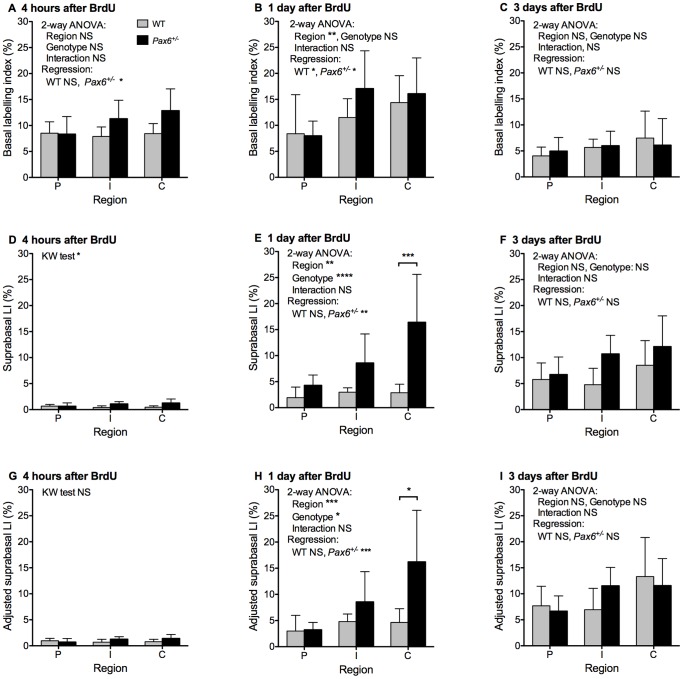Figure 3. Distributions of BrdU-positive cells in different regions of WT and Pax6+/− corneal epithelia.
The mean (±95% CI) BrdU labelling indices are shown separately for the peripheral (P), intermediate (I) and central (C) regions of the cornea for chase periods of 4 hours (A, D & G), 1 day (B, E & H) and 3 days (C, F & I). (A–C) BrdU basal labelling index (BrdU positive basal cells as a percentage of total basal cells). (D–F) BrdU suprabasal labelling index (BrdU positive suprabasal cells as a percentage of total suprabasal cells). (G–I) Adjusted suprabasal BrdU labelling index (BrdU positive suprabasal cells as a percentage of total basal cells). In most cases statistical comparisons were made by 2-way analyses of variance (ANOVAs) of log-transformed data followed by pairwise Bonferroni post-hoc tests and separate linear regression analyses for WT and Pax6+/− genotypes. Non-parametric Kruskal-Wallis (KW) tests followed by pairwise Dunn’s multiple comparison tests were used for D and G because there were many zero values and the log-transformed data were not normally distributed. Significant differences for the 2-way ANOVAs and linear regressions (or Kruskal-Wallis tests) are shown in each panel. The only two significant pairwise post-hoc tests between genotypes are shown by asterisks over the two bars compared (central region in E and H). The post-hoc tests between regions are not shown on the histograms. For WT corneas, only the post-hoc test between regions P vs. C in B was significant (P<0.05). For Pax6+/− corneas, post-hoc tests between pairs of regions were significant for P vs. C in A (P<0.05), B (P<0.05), E (P<0.001) and H (P<0.001), and for P vs. I in B (P<0.05) and H (P<0.05). Abbreviations: LI, labelling index; WT, wild-type; NS, not significant; *P<0.05; **P<0.01; ***P<0.001; ****P<0.0001. 6–12 eyes per group as shown in Fig. 2E–G.

